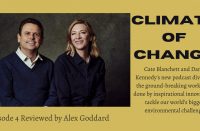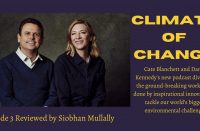Two Wrongs Do Not Make A Right
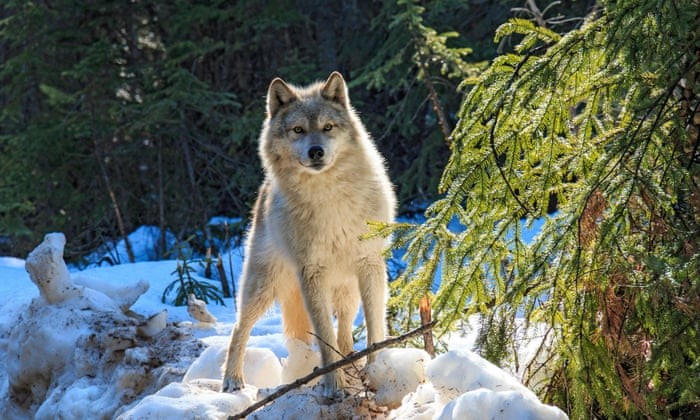
Source: The Guardian// Photograph: Yvette Cardozo/Alamy
Two Wrongs Do Not Make A Right

Source: The Guardian// Photograph: Yvette Cardozo/Alamy
A few years ago, the province of British Columbia decided to place a bounty on wolves. This decision was in response to declining caribou populations, a species which can now only be found in BC as they have completely disappeared from the United States. After all was said and done, the cull estimated to have killed over a thousand wolves.
This week, a study from the University of Alberta shared that the cull did very little to bring back caribou herds, and these apex predators died for nothing.
Reasoning behind the cull was simple; humans have been clearcutting forests and intruding the hinterlands (for snowmobile and ski trails) for years, which have created corridors and open spaces for wolves to stalk the caribou more easily. In fact, the Guardian stated that over the last five years, BC has permitted “more than 900 sq. km of land to be logged, despite the forests being listed as critical caribou habitat. In the last year, 314 logging cut-blocks have been approved in areas where the caribou are most vulnerable.”
Instead of addressing the clearcutting which plagued caribou populations (because that would mean WE would have to make change), we decided to slaughter the wolves that hunt them instead.
Not only did the cull have little effect on saving caribou populations, in regards to “the endangered Wells Grey herd in central British Columbia, which has suffered one of the worst population declines, the researchers found that wolves weren’t even a major predator.”
When are we going to realize that two wrongs do not make a right? The web of life is complicated, and by removing an apex predator like wolves from the food chain, we are triggering complex relationship breakdowns that extend beyond wolves and caribou.
Ian McAllister, the executive director at Pacific Wild, echoed these sentiments. He stated, “Wolves in every meaning of the word are being used as a scapegoat for government negligence.”
Incredibly sad indeed.
Have you ever heard of an Australian “Bilby”?
The Australian native Bilby is a marsupial with rabbit-like ears – extremely cute. The Bilby is an important ecosystem engineer with its excellent digging ability allowing other species to reap the rewards of its hard work. Populations of this interesting little animal have been devastated over the past 200 years after being hunted to near extinction by cats and foxes. Last year bilbies were released into the Malle Cliffs National Park in New South Wales as part of a programme for threatened species, which has now resulted in a baby boom. Check out the video of the little creatures here.
The bilbies released in October of 2019 were protected in a 9,500 nectar, feral predator-free fences area which is designed to keep the cats and foxes out. The bilbies have thrived in this projected environment, and as a result young joeys at various development stages can now be found in the national park. Ecologists capture the bilbies to perform health checks and monitor the population and ensure smooth sailing.
Australia has one of the highest mammal extinction rates in the world, and this species is no different. Ecologists say that the successful reintroduction gives hope to the threatened species and shows that the population is going in the right direction.
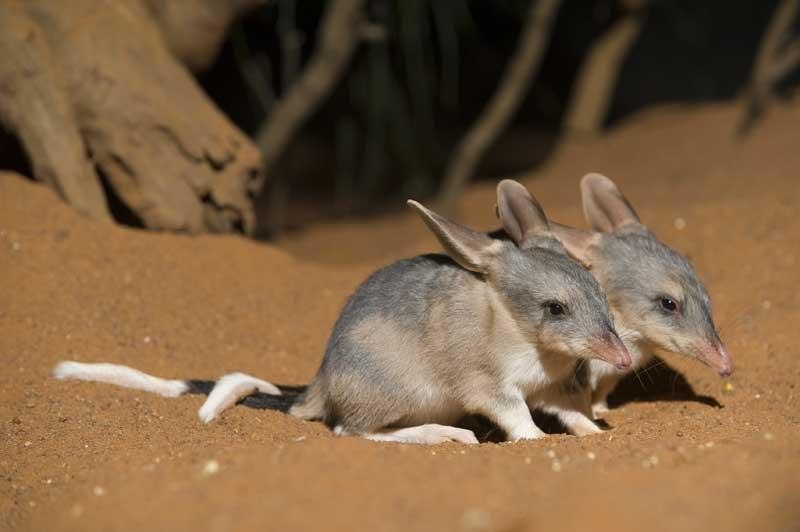
Source: Bush Heritage Australia citing Minden Pictures | AUSCAPE
New research finds that Beluga Whales can form social networks just like humans
A new study led by Florida Atlantic University’s Harbor Branch Oceanographic Institute shows that just like humans, beluga whales can also form social networks and connections beyond their close relatives, even with distantly related and completely unrelated whales.
The researchers used molecular genetic techniques and field studies from 10 locations across the Arctic from Alaska to Canada and Russia to Norway to pull together decades of research about the group dynamics, group behaviour and complex relationships among beluga whales.
The study found that beluga communities have some similarities to human ones, where social networks, cooperation and culture involve interactions between kin and non-kin. Beluga whales have a lifespan of approximately 70 years, making it possible for them to form long-term affiliations with whales of all ages, and both sexes in migratory and resident populations in numbers of hundreds and even thousands across various habitats. Think of it like having a connection with that person you met 3 years ago while at a friend’s get together. Belugas have similar affiliations for forming long-term connections.
The researches stated that it may be the belugas highly developed echolocation – clicks of noises that bounce back from the environment which are interpreted to identify objects such as food or to communicate with others – that enables them to remain in regular acoustic contact with close kin even when not associating for a while. The researchers hope that the new understanding of why individuals may form social groups, even with non-kin, will promote new research on what constitutes species resilience. It could also provide more knowledge on how species like the beluga whale can react and respond to emerging threats such as climate change.
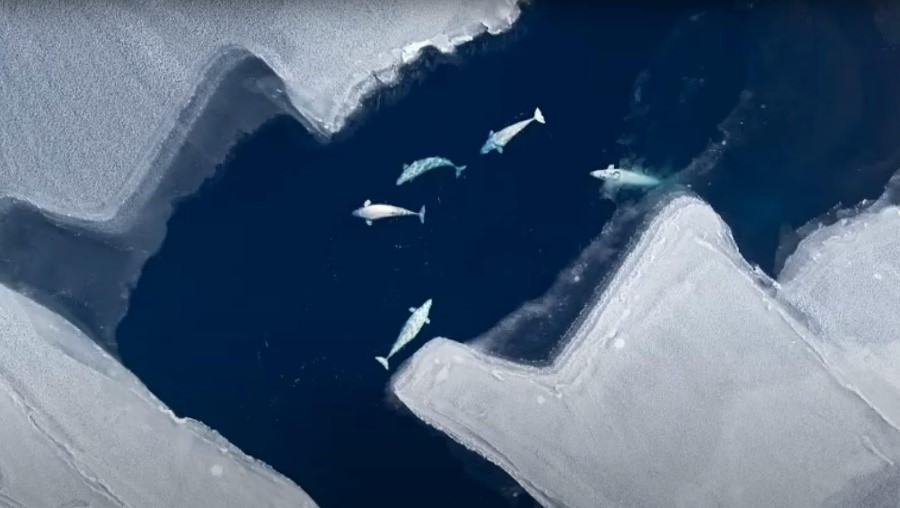
Source: Oceanographic
The future of carbon neutral infrastructure projects in Canada
Proposals for new mines, power plants, pipelines and railways in Canada will have to include plans to reach ’net zero’ by 2050 if they want to get approved. ‘Net zero’ means any greenhouse gases emitted are absurd by natural or mechanical means, rather than being left to gather in the atmosphere, which of course contributes to global warming. Environmental Minister Jonathan Wilkinson said this plan will ensure that Canada meets its goal to exceed the Paris climate agreement targets by 2030, then hopefully hit net zero by 2050 – but details are fuzzy. Let me explain.
The Impact Assessment Act was passed before the last election to overhaul how federal environment assessment are conducted. A long list of projects like mines, power lines, wind farms, airports, pipelines etc. automatically require those assessments. In addition to the existing requirements, the Impact Assessment Act will, for the first time ever, include a project’s effect on climate change as one of the considerations for project approval. The report released Thursday outlines the ‘how will this happen?’ questions. The new consultations process will require project proposals to include the greenhouse gas emissions to be produced from construction and operations and clearly outline what efforts are being made to minimize these emissions. Essentially, a net zero plan will be one of the enforceable conditions put on a project if it is approved – that’s good news, right? The answer is a hesitant yes because there are no such details about how a plan would be measured or enforced.
Julia Levin, the climate and energy program manager at Environmental Defence said she’s disappointed with the new rules. You can read more about Wilkinson’s defence for the new rules here.
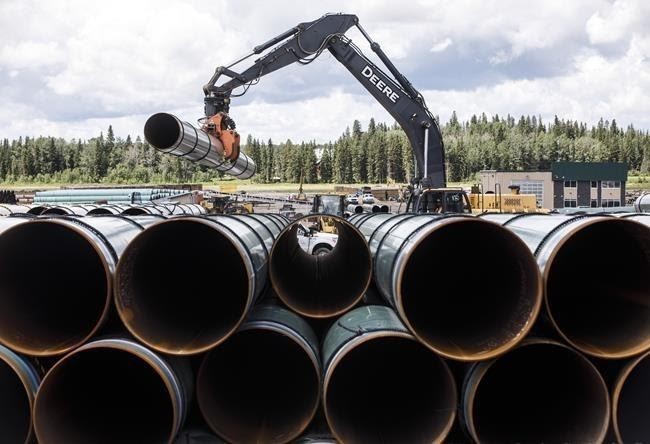
Source: Ottawa Matters
The Great Green Wall of Africa
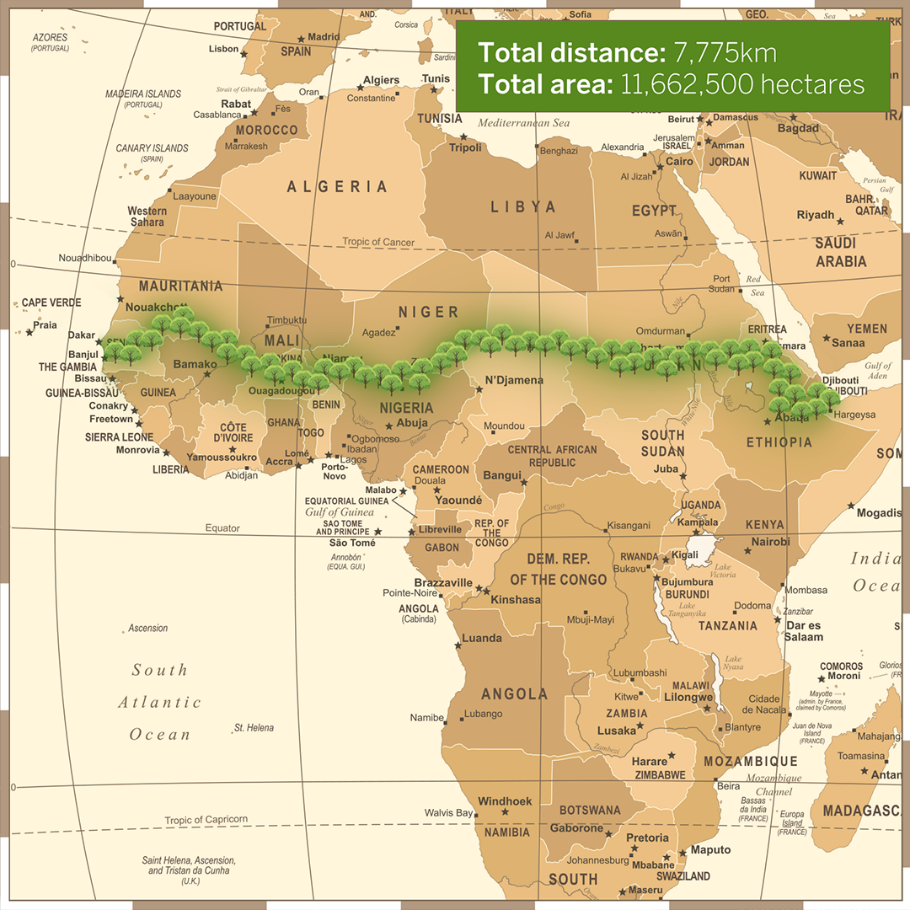
Expected Pathway of the Great Green Wall in Africa// Source: Standard Bank
The “Great Green Wall” of approximately 7,644 km of trees is being planted by 21 African countries. This chain of trees across the continent aims to create a physical barrier to reduce the movement of the Sahara which has been disrupting livelihoods in the least developed Sahel region for millennia. The UN Environment Programme considers this the world’s largest ecosystem restoration project that runs in the Sahel region in an east-west stretch across the breadth of Africa and is just south of the Sahara Desert.
This project ensures that the land is being used in a sustainable manner by restoring degraded land and it helps create jobs (planting and maintenance). It is currently 15% underway with an expected completion by 2030. According to the United Nations (UN) Food and Agricultural Organization the area to be planted covers approximately 2 times the size of India with 780 million hectares and 21% consisting of agro-sylvo-pastoral lands that are restorable. This degraded land would be planted with over 110 diverse native species that can easily adapt to the environment.
The existence of this green wall will fulfill 10 of the 17 UN Sustainable Development Goals. These trees will help capture 250 million metric tonnes for carbon yearly which is equivalent to removing cars for more than three years in California. An added benefit is that the presence of trees would encourage rainfall which will help the soil and provide water for communities.
Carbon may be peaking – But methane’s on the rise
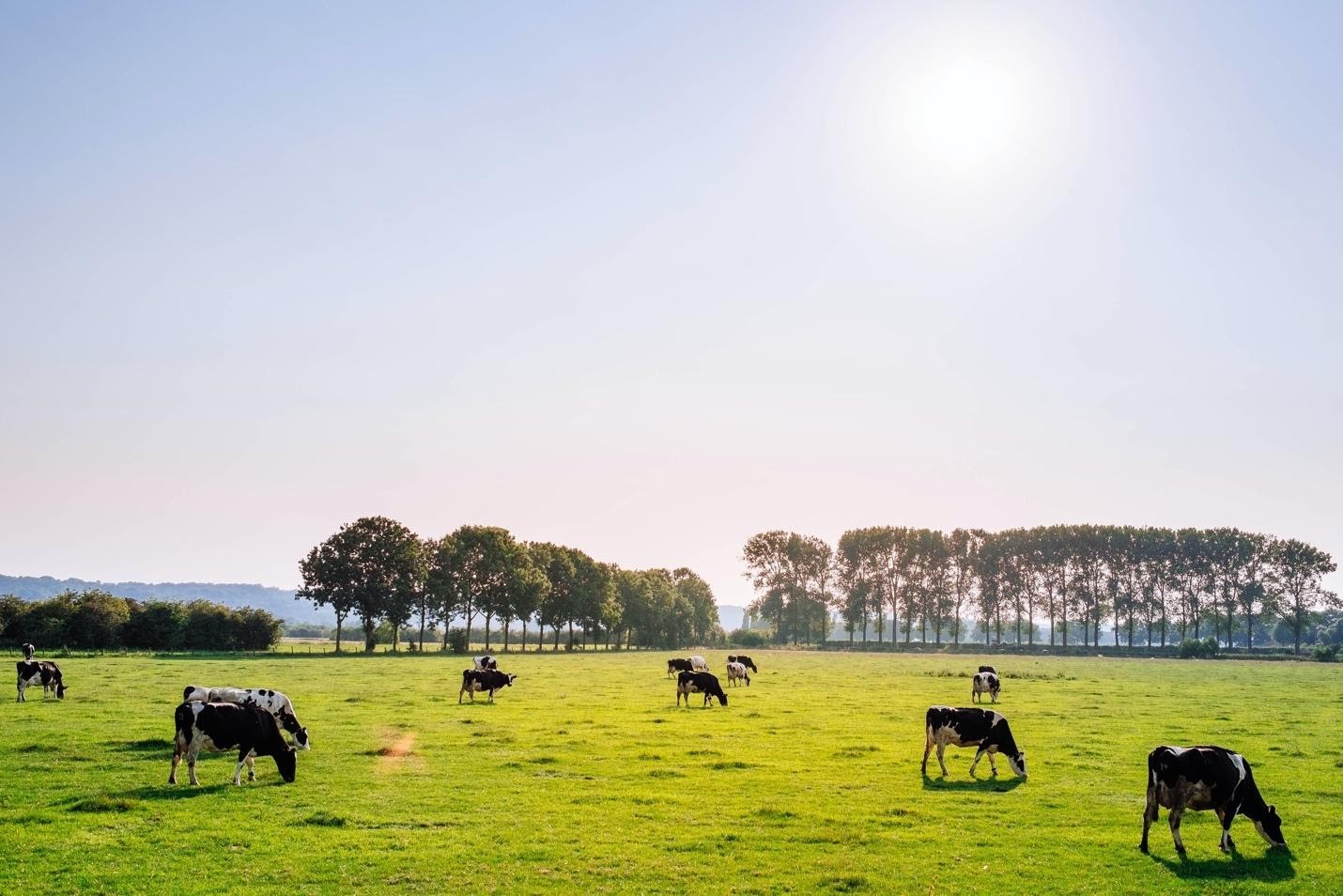
Photo by Leon Ephraïm on Unsplash
It has been found that in 2017 methane levels peaked and reached an all-time high – even more worryingly is that this is the most recent year that all levels are available, meaning they’re probably even higher now. We may have been having some success with decreasing carbon dioxide emissions, however it seems as though we’ve forgotten about a gas that traps 86 times as much as the same mass of carbon dioxide over a 20-year period, and isn’t even near its peak.
Where is all this methane coming from you might ask? COWS! Seriously! Agriculture is a high emitter of methane (two-thirds of emissions!) because as cows, as well as other livestock belch, they release methane. Due to our high demand for meat, there are a lot of cows on the planet and as a result, a whole lot of methane. Of course, cows aren’t the only way methane is produced, as methane emissions released when coal mining, and are also released via leaks along pipelines and gas wells constituting the other third of emissions.
While we have made pretty good strides in decreasing our carbon dioxide emissions it appears as though we have ignored an even more important greenhouse gas in methane. If we are to keep the earth from warming by the two-degree Celsius goal, it is apparent that there must be strict agricultural reform as well as gas leaks that need to be plugged.

Shanella Ramkissoon is a Masters in Environment and Sustainability candidate. Her background is in the field of Environmental Science and Environment and Resource Management. Her interests lie in environmental conservation, especially for marine species such as coral reefs, turtles and dolphins. In her free time, she enjoys landscape photography, baking and art and craft projects.
Alexandra completed her Masters degree in Environment and Sustainability at Western University. She also holds a Bachelor’s of Science from the University of Windsor with Honours in Environmental Studies, where she concentrated in Resource Management and was actively involved in undergraduate research. Outside of academia, she enjoys hiking, camping, and spending her summers on the beach in Prince Edward Island.

Alex has a background in Environmental Science holding an undergraduate degree in Environmental Studies, and a Masters of Environment and Sustainability (MES) from Western University. Alex was born and raised in Barbados, a small island in the Caribbean, and has spent the past seven years attending school in Canada, while returning to Barbados for the summer and Christmas periods. Alex is passionate about the environment as he has been able to witness firsthand the effects of climate change on marine and tropical environments, and hopes to spread awareness about these issues.



